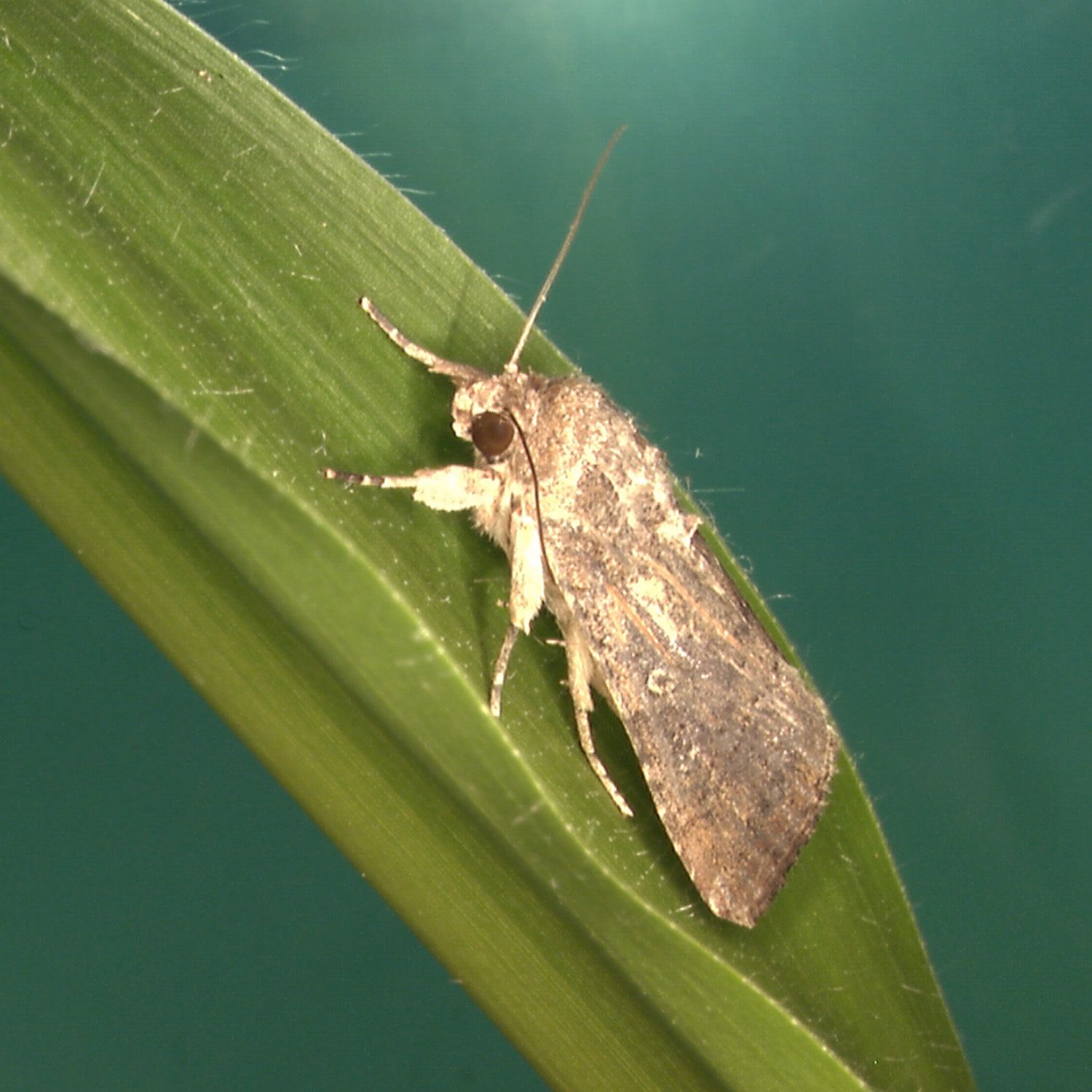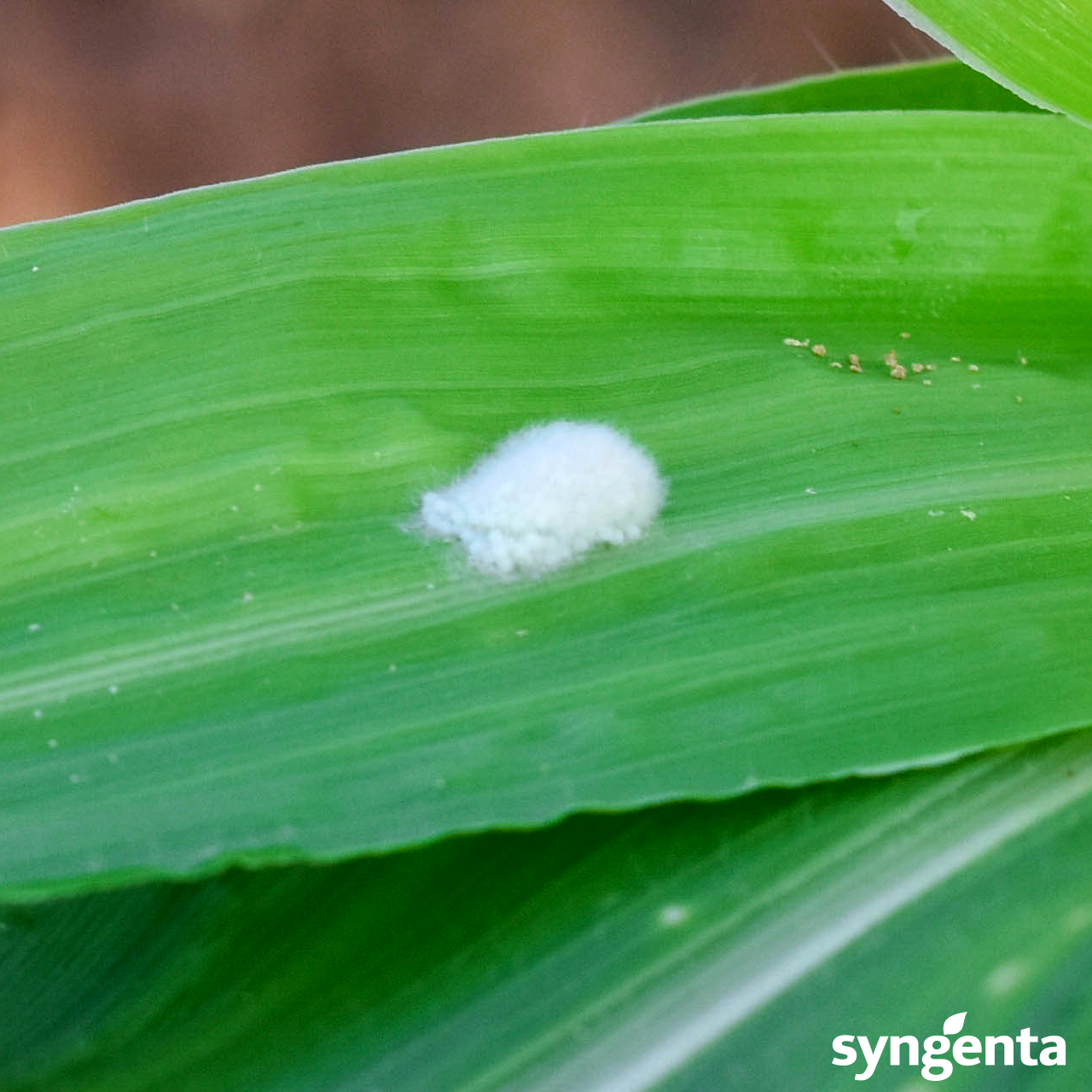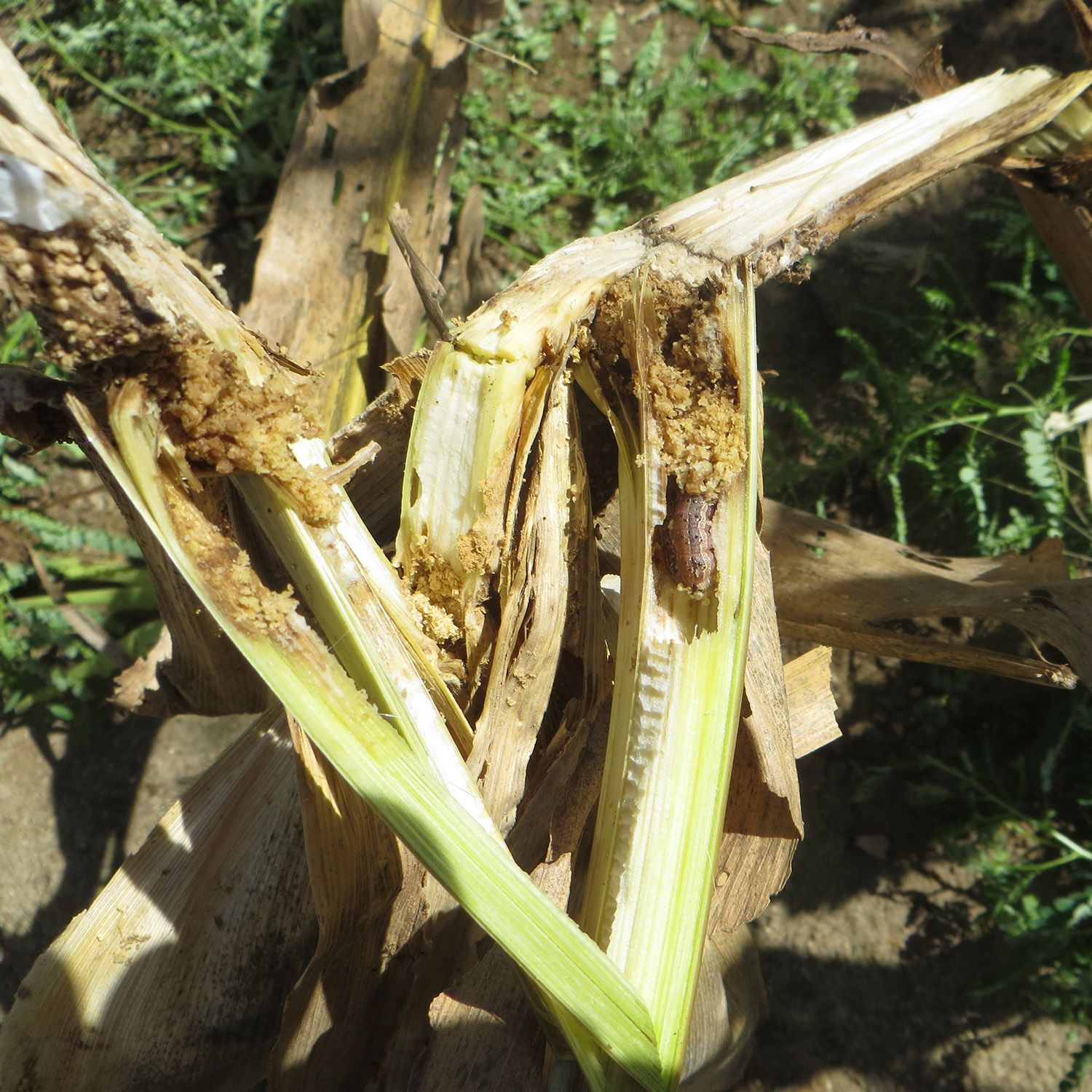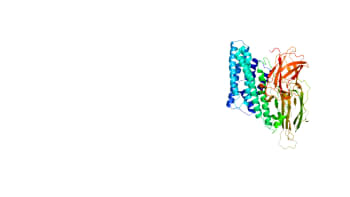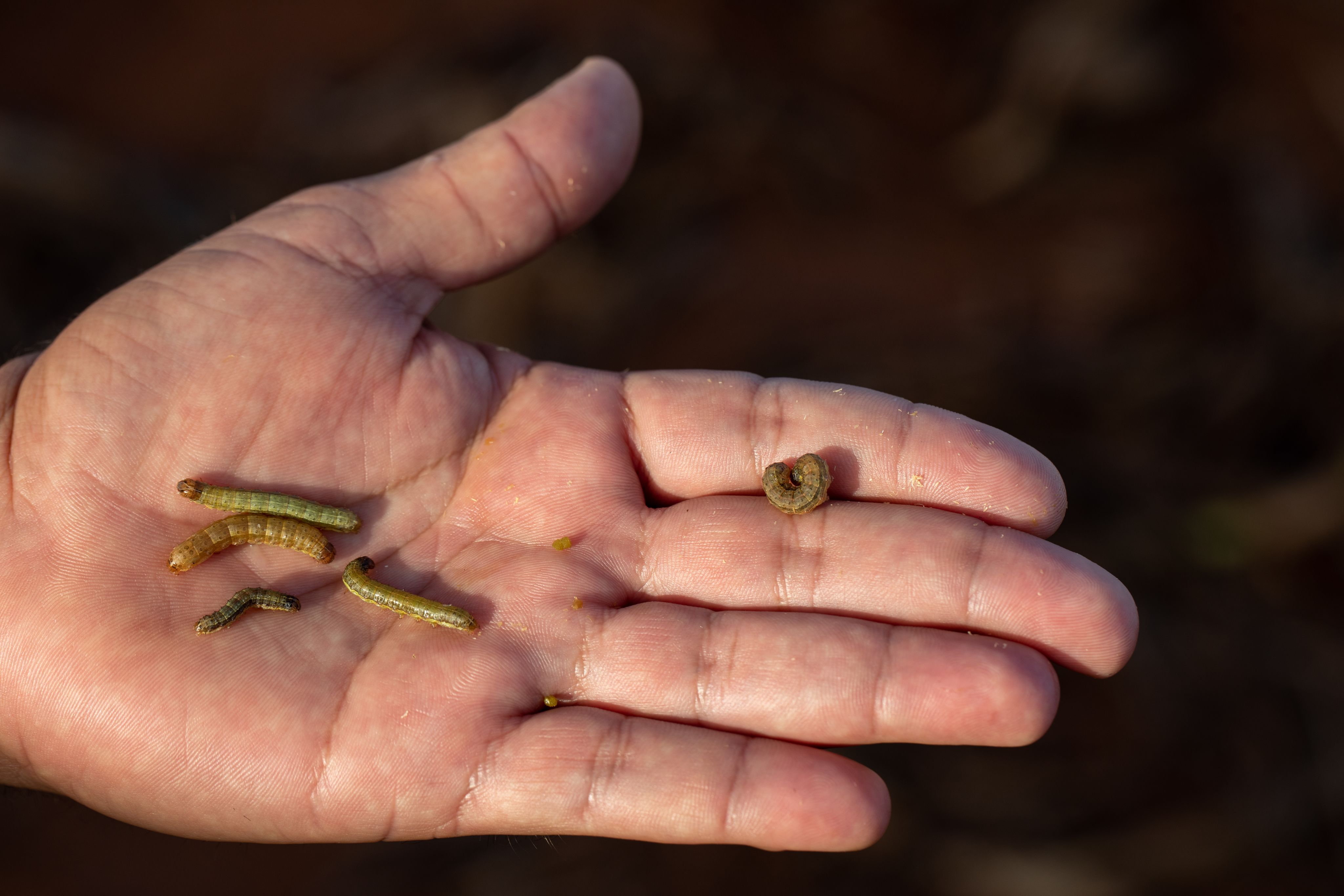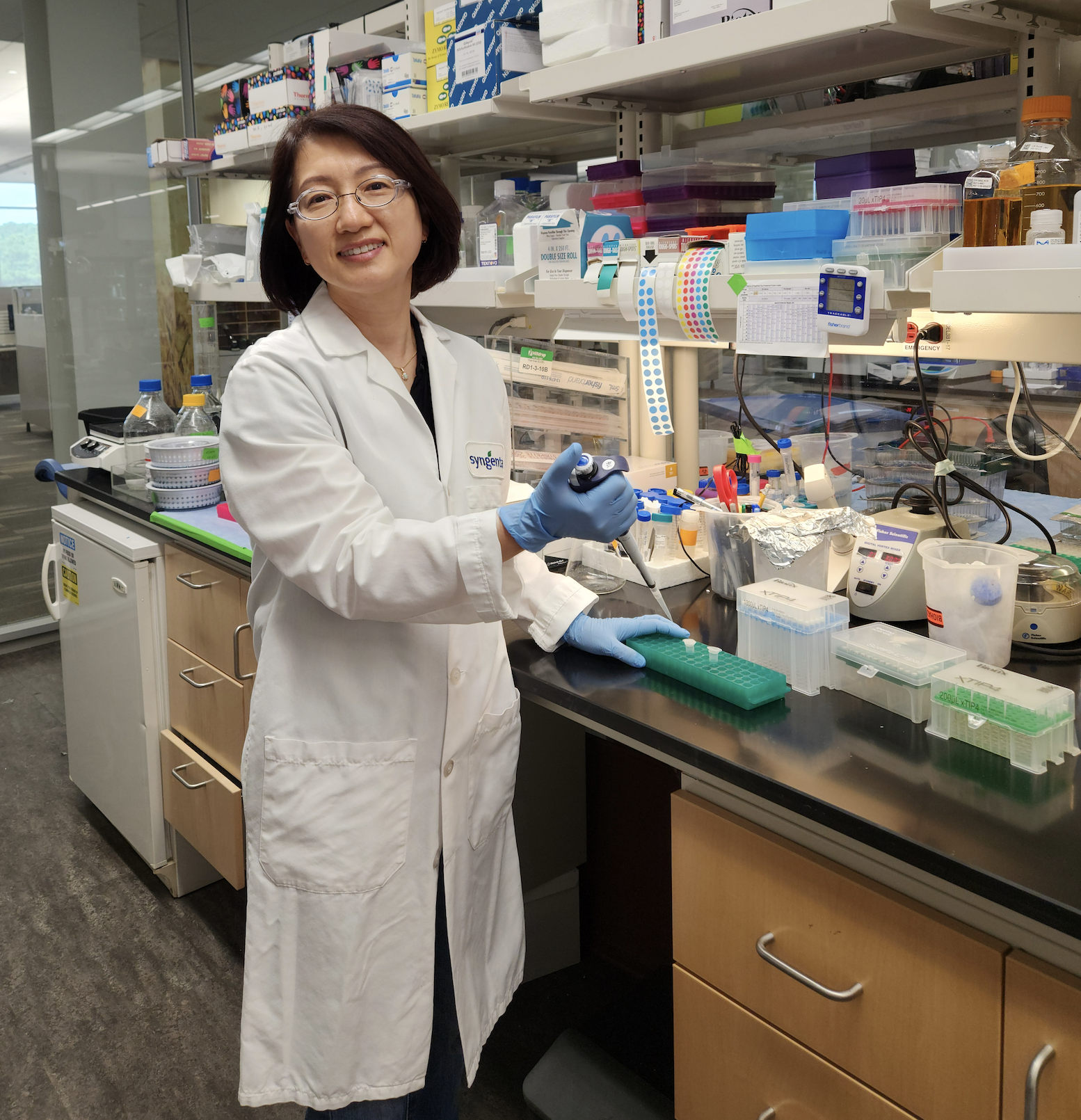A billion dollar problem
How innovative science is taking on fall armyworm, one of the world’s most disruptive pests.
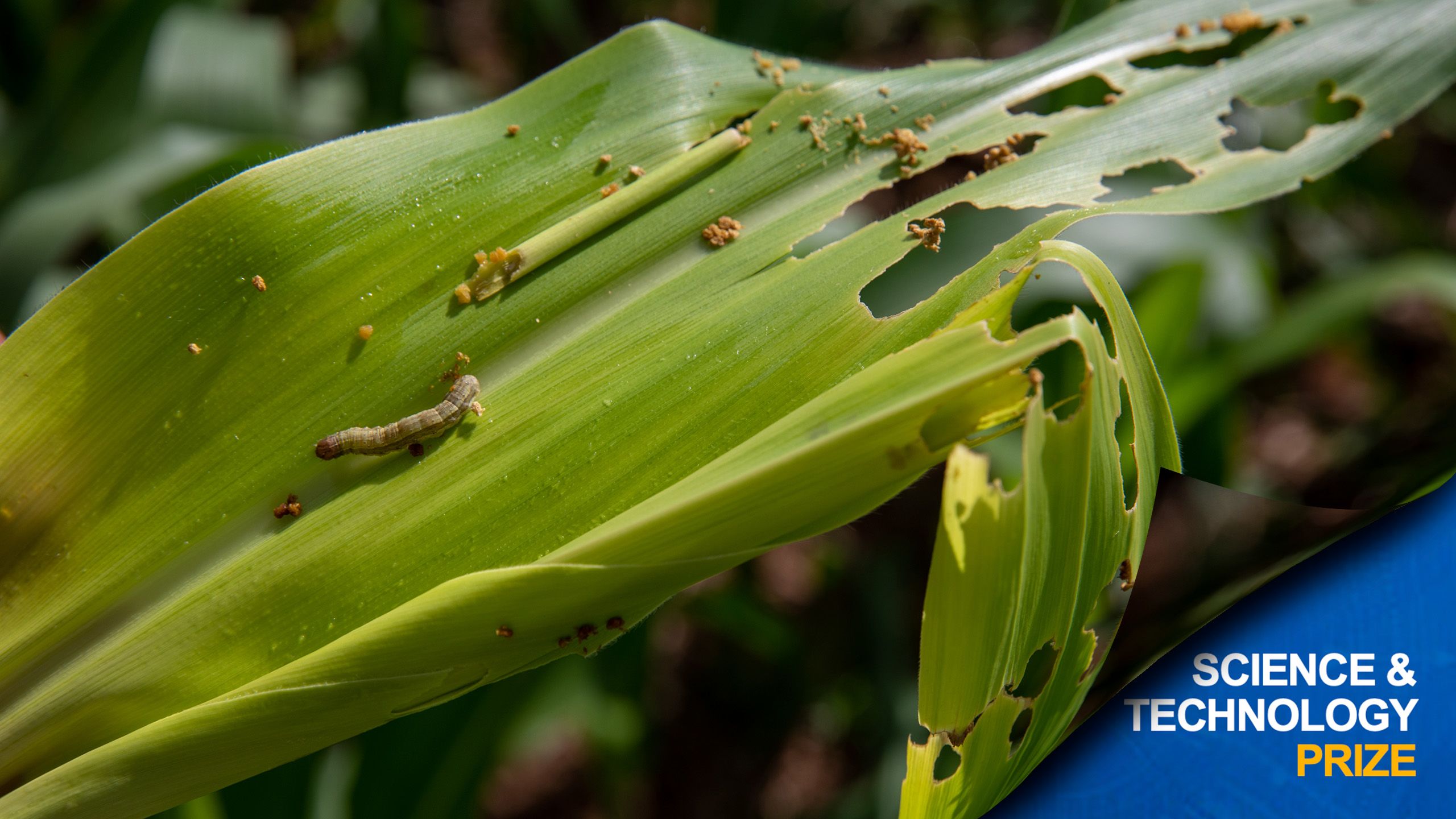
For Australian farmers, the spring/summer growing season of 2024 has been a deeply challenging one. Farmers are reporting huge losses to their crops across corn, sorghum, millet and many more - representing tens of thousands of dollars of lost income. The destruction is so serious that some farmers are comparing it to a bushfire. But this is not some meteorological disaster. This is the impact of fall armyworm.
Fall armyworm is (despite the name) not a worm at all, but a moth.
In its larval and caterpillar stages it has a voracious appetite for grain and crops. Moths will lay eggs in the foliage of corn plants, and upon hatching, the brood will begin to feed. As the pests mature, the caterpillars can decimate a crop in a matter of days.
Native to tropical and subtropical regions of the Americas and preferring warm climates, it spreads quickly and can feed extremely rapidly. They can lay hundreds of eggs at a time, and the moths fly around 100 km in a single night. Strong storms and winds can push them even further afield, and in an era of global trade, and a changing climate that makes for warmer conditions around the world, it is not surprising that fall armyworm has spread like wildfire.
Firmly established
By 2016 it was being reported in Sub-Saharan Africa, by 2018 it tore across the Indian subcontinent and into China. In 2020 it reached Australia, where it took just three months before the pest was firmly established in the country. It has affected more than 70 countries worldwide, and despite multiple attempts around the world, no country has ever successfully eradicated the pest once it has established itself.
The damage that fall armyworm can inflict is immense, reducing harvests by as much as 50%. In 2018, the Food and Agriculture Organization of the United Nations estimated that almost 18 million tons of corn are lost to fall armyworm annually – enough to feed millions of people every year. Research from the international agricultural NGO, CABI, shows that annual losses caused by fall armyworm in Africa alone run to just under $10 billion a year.
Fall armyworm is one of the most invasive pests threatening global food security and control options can vary across different countries, cropping systems and ways of working. Solutions include chemical crop protection to kill off the eggs and larvae, but the insect can develop resistance, and as the young pests shelter in the whorl of the leaves or enter the ears, they can often survive the application process.
Fall armyworm (Spodoptera frugiperda) adult on corn.
Fall armyworm (Spodoptera frugiperda) adult on corn.
Fall armyworm eggmass on corn leaf.
Fall armyworm eggmass on corn leaf.
Feeding in the stems of crops, the fall armyworm eats quickly.
Feeding in the stems of crops, the fall armyworm eats quickly.
In its larval and caterpillar stages it has a voracious appetite for grain and crops. Moths will lay eggs in the foliage of corn plants, and upon hatching, the brood will begin to feed. As the pests mature, the caterpillars can decimate a crop in a matter of days.
Native to tropical and subtropical regions of the Americas and preferring warm climates, it spreads quickly and can feed extremely rapidly. They can lay hundreds of eggs at a time, and the moths fly around 100 km in a single night. Strong storms and winds can push them even further afield, and in an era of global trade, and a changing climate that makes for warmer conditions around the world, it is not surprising that fall armyworm has spread like wildfire.
Firmly established
By 2016 it was being reported in Sub-Saharan Africa, by 2018 it tore across the Indian subcontinent and into China. In 2020 it reached Australia, where it took just three months before the pest was firmly established in the country. It has affected over 70 countries worldwide, and despite multiple attempts around the world, no country has ever successfully eradicated the pest once it has established itself.
The damage that fall armyworm can inflict is immense, reducing harvests by as much as 50%. In 2018, the Food and Agriculture Organization of the United Nations estimated that almost 18 million tons of corn are lost to fall armyworm annually – enough to feed millions of people every year. Research from the international agricultural NGO, CABI, shows that annual losses caused by fall armyworm in Africa alone run to just under $10 billion a year.
Fall armyworm is one of the most invasive pests threatening global food security and control options can vary across different countries, cropping systems and ways of working. Solutions include chemical crop protection to kill off the eggs and larvae, but the insect can develop resistance, and as the young pests shelter in the whorl of the leaves or enter the ears, they can often survive the application process.
Fall armyworm (Spodoptera frugiperda) adult on corn.
Fall armyworm (Spodoptera frugiperda) adult on corn.
Feeding in the stems of crops, the fall armyworm eats quickly.
Feeding in the stems of crops, the fall armyworm eats quickly.
What is the Syngenta Science & Technology Prize?
Syngenta recognizes our scientists' achievements and celebrates the breakthroughs that emerge from their work through the Science and Technology (S&T) Prize. Investing in exceptional talent and celebrating innovation is one of the reasons we are known as a top five science employer.
Targeted prevention
However, prevention is better than cure, and the most effective way of dealing with the threat is to use genetically engineered crops with stacked traits that produce a protein targeting the pest that threatens it. When the fall armyworm eats the leaf or a kernel on the ear that has this protein, the protein will kill off the insect.
Trait stacking is a common practice within agriculture, and Syngenta has developed its own unique trait stack for corn, known as Viptera®. The Viptera® trait stack contains the most effective above-ground insect control in the industry, offering great resistance against a host of threats – including fall armyworm.
Dr. Greg Warren recalls what led to the discovery of the Agrisure Viptera® trait.
A great trait stack also depends on a commitment to continuous innovation. After all, even after traits have been commercially deployed, the pest can eventually develop resistance, explains Hyunsook Chae, a Syngenta Fellow specializing in trait design. Dr. Chae, a leading expert in plant physiology, genetics and biochemistry, is deeply familiar with the dangers posed by fall armyworm, and it’s thanks to her pioneering research there is a brand-new way of handling these pests.
Dr. Chae, who joined Syngenta in 2006 after completing a PhD in plant biology at Yonsei University in South Korea and extensive post-doc work on trait design in major field crops, warns that available insect control traits could see reduced effectiveness "within the next decade". "It can happen much more quickly too – companies have deployed a trait previously and seen evolved resistance occur within a matter of years,” she says.
Insect pressures
Evolved resistance is not a surprise, but cropping systems are also playing a part in this. In the US and EU there is generally one season per year for cultivation, but, in warmer climates like Brazil, there could be continuous cultivation with up to three seasons, meaning there is little time for insect pressures to drop due to a change in season, or crop rotation which allows for areas to 'rest' between cultivation periods.
Dr. Chae points out that when the weather is good for growers it is also good for the insects. “If they survive the first season, they will propagate very quickly the next season.”
Awareness of the fall armyworm problem is long standing for scientists, given its rapid spread and highly destructive behavior. Unsurprisingly, Dr. Chae says there was “enormous demand within the business to find a new mode of action.”
When it comes to finding ways of tackling fall armyworm, an unlikely ally is bacillus thuringiensis (Bt). This naturally occurring soil dwelling bacteria is the most used biological insecticide in the world thanks to a series of crystal proteins produced by the bacteria. The crystal proteins, known as Cry proteins, are highly effective at targeting pests and have the added benefit of being completely non-harmful to humans. The genes which regulate these proteins are an invaluable source of new potential traits that can be introduced into the genetics of crops to protect them.
There are many different Cry proteins – these proteins all have different impacts and act upon different insects. Some proteins have been used to tackle other insect pests or to tackle mosquitos.
Combating resistance
However, the downside is that despite the effectiveness of Cry proteins, resistance can still be an issue. Even in crops with Bt genes, resistance is still being observed which makes it imperative to find new modes of action – as well as stacking traits on top of one another – to combat resistance.
To find new modes of action requires understanding how Cry proteins are structured. Generally, they are organized into three domains. Dr. Chae explains: “Domain III is the most diverse area across all Cry proteins – and evolution comes from this sequence diversity.”
Then came a lightbulb moment for Dr. Chae: “Domain III is the driver of evolution across all Cry proteins, so if we speed up the evolution of Cry proteins to generate a new protein could that lead to a new way of controlling fall armyworm?” This hypothesis and the research inspired by it led to Dr. Chae being awarded Syngenta’s prestigious Science and Technology Prize in 2020.

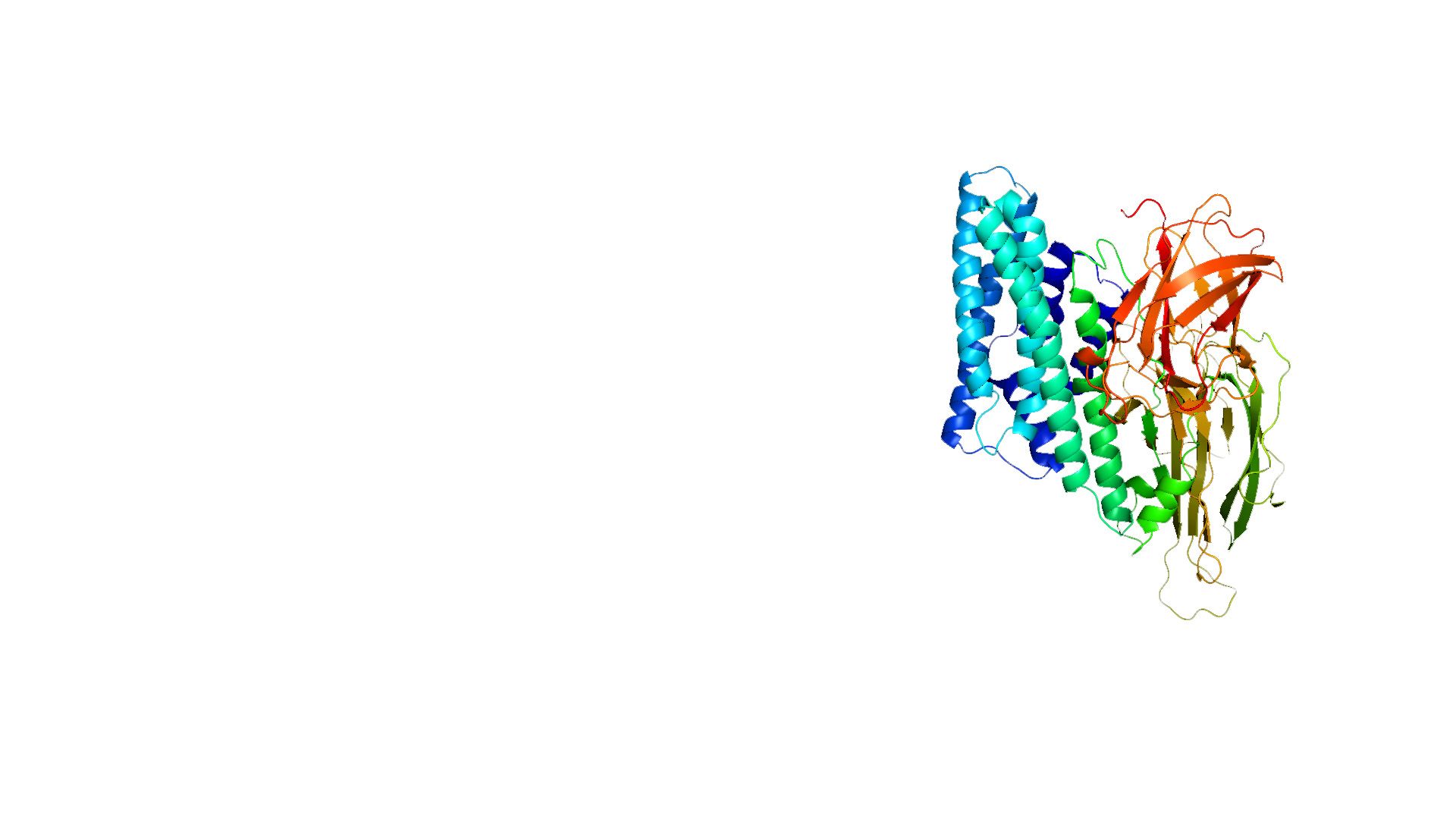
A great trait stack also depends on a commitment to continuous innovation. After all, even after traits have been commercially deployed, the pest can eventually develop resistance, explains Hyunsook Chae, a Syngenta Fellow specializing in trait design. Dr. Chae, a leading expert in plant physiology, genetics and biochemistry is deeply familiar with the dangers posed by fall armyworm, and it’s thanks to her pioneering research there is a brand-new way of handling these pests.
Dr. Chae, who joined Syngenta in 2006 after completing a PhD in plant biology at Yonsei University in South Korea and extensive post-doc work on trait design in major field crops, warns that available insect control traits could see reduced effectiveness 'within the next decade'. "It can happen much more quickly too – companies have deployed a trait previously and seen evolved resistance occur within a matter of years,” she says.
Insect pressures
Evolved resistance is not a surprise, but cropping systems are also playing a part in this. In the US and EU there is generally one season per year for cultivation, but, in warmer climates like Brazil, there could be continuous cultivation with up to three seasons, meaning there is little time for insect pressures to drop due to a change in season, or crop rotation which allows for areas to 'rest' between cultivation periods.
Dr. Chae points out that when the weather is good for growers it is also good for the insects: “If they survive the first season, they will propagate very quickly the next season.” Awareness of the fall armyworm problem is long standing for scientists, given its rapid spread and highly destructive behavior. Unsurprisingly, Dr. Chae says there was “enormous demand within the business to find a new mode of action.”
When it comes to finding ways of tackling fall armyworm, an unlikely ally is bacillus thuringiensis (Bt). This naturally occurring soil dwelling bacteria is the most used biological insecticide in the world thanks to a series of crystal proteins produced by the bacteria. The crystal proteins, known as Cry proteins, are highly effective at targeting pests and have the added benefit of being completely non-harmful to humans. The genes which regulate these proteins are an invaluable source of new potential traits that can be introduced into the genetics of crops to protect them.
There are many different Cry proteins – these proteins all have different impacts and act upon different insects. Some proteins have been used to tackle other insect pests or to tackle mosquitos.
Combating resistance
However, the downside is that despite the effectiveness of Cry proteins, resistance can still be an issue. Even in crops with Bt genes, resistance is still being observed which makes it imperative to find new modes of action – as well as stacking traits on top of one another – to combat resistance.
To find new modes of action requires understanding how Cry proteins are structured. Generally, they are organized into three domains. Dr. Chae explains: “Domain III is the most diverse area across all Cry proteins – and evolution comes from this sequence diversity.”
Then came a lightbulb moment for Dr. Chae: “Domain III is the driver of evolution across all Cry proteins, so if we speed up the evolution of Cry proteins to generate a new protein could that lead to a new way of controlling fall armyworm?” This hypothesis and the research inspired by it led to Dr. Chae being awarded Syngenta’s prestigious Science and Technology Prize in 2020.


By taking domain III proteins from different aspects of the Cry protein genetic structure, Dr. Chae developed what is called a 'chimeric protein' using a pre-existing insecticidal protein as a template. Through careful screening and lab tests, Dr. Chae found that her novel protein was highly effective against fall armyworm operating through a new mode of action.
Fall armyworms in a farmer's hand.
Fall armyworms in a farmer's hand.
So effective was the new protein that it did not just tackle fall armyworm but showed huge promise in also tackling soybean looper and velvetbean caterpillar, two other highly damaging and invasive moth species impacting soybean fields.
Developing a new possible lead for dealing with these invasive pests could transform farmers yields in areas impacted by fall armyworm.
After winning the prize, Dr. Chae has already had a sizeable impact. The research was published in a peer-reviewed scientific journal, and her evolutionary perspective has had a formative effect on how scientists within the company generate new leads for investigation. The discovery has led to product development in both corn and soybean.
The caterpillars can decimate a crop in a matter of days.
The caterpillars can decimate a crop in a matter of days.
Protecting future harvests
Dr. Chae continues to lead ongoing research focusing on trait development. As she explains, it is important to “push forward new traits as quickly as possible – if we can speed things up by even one year, we can get better traits to farmers more quickly, protecting their harvests for the long term.”
In terms of the future of controlling fall armyworm, naturally occurring proteins offer exciting avenues for future research. Dr. Chae says there is ongoing research on new classes of proteins. But there remain some questions still to be answered. “We need to understand exactly how these new proteins work, and whether they will be robust enough to be effective long-term, so there is much still to discover,” she says.
Dr. Hyunsook Chae, Syngenta Fellow
Dr. Hyunsook Chae, Syngenta Fellow
For Dr. Chae, working at Syngenta is a chance to do “high-quality science and use that science to drive discovery.” However, discovery is clearly a collaborative effort. She says: “The scientific community here is always happy to support hypothesis-led investigations. It takes many different experts from many different fields for discovery. The research environment celebrates diversity of expertise and there is a very strong team culture that allows people to work together on new ideas.”
As a final thought, Dr. Chae explains that Syngenta is “very strategic in how it tackles problems and that lets us be more efficient than other companies.” You only need to look at her prize-winning breakthrough – and its benefit to growers – to see that strategy clearly paying off.


